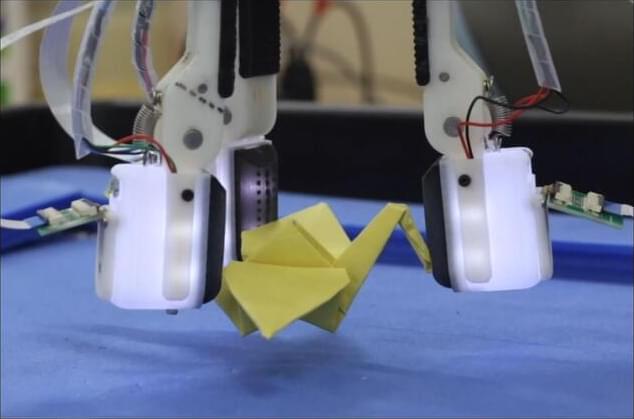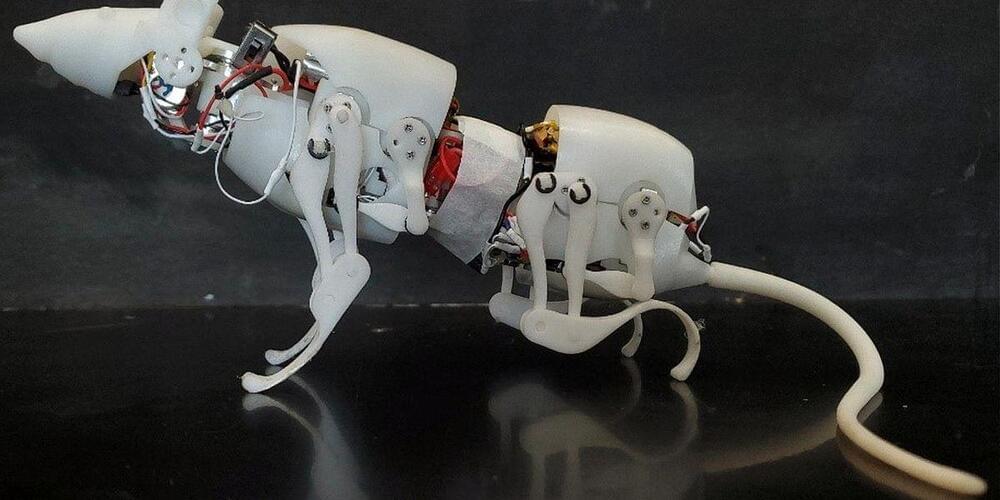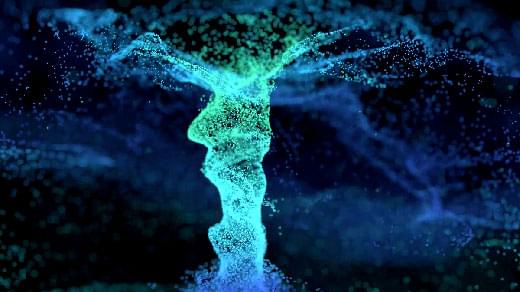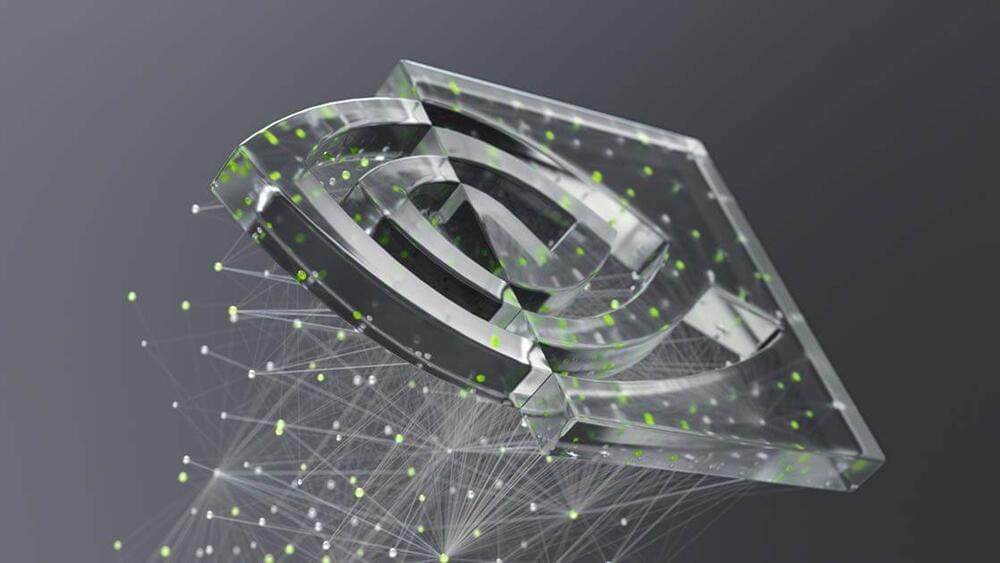An AI asks Putin whether AI could also be president.
Category: robotics/AI – Page 1,656
Elon Musk Says He Could Make “Catgirl” Sex Robots If He Wanted To
To SpaceX and Tesla CEO Elon Musk, the future is teeming with humanoid robots.
During a lengthy and freewheeling conversation with TED’s Chris Anderson last week, Musk expanded on his vision of what it could look like to share everyday life with automatons doing our bidding.
And, predictably, the conversation jumped directly to the sexual implications of humanoid androids. Despite his busy personal schedule, Musk clearly does have some time to daydream.

A “magnetic tentacle robot” could hunt down cancer deep in your lungs
UK researchers have developed a small, flexible, snake-like “magnetic tentacle robot” to navigate deep into the lungs.
Scientists create algorithm to assign a label to every pixel in the world, without human supervision
Labeling data can be a chore. It’s the main source of sustenance for computer-vision models; without it, they’d have a lot of difficulty identifying objects, people, and other important image characteristics. Yet producing just an hour of tagged and labeled data can take a whopping 800 hours of human time. Our high-fidelity understanding of the world develops as machines can better perceive and interact with our surroundings. But they need more help.
Scientists from MIT’s Computer Science and Artificial Intelligence Laboratory (CSAIL), Microsoft, and Cornell University have attempted to solve this problem plaguing vision models by creating “STEGO,” an algorithm that can jointly discover and segment objects without any human labels at all, down to the pixel.
STEGO learns something called “semantic segmentation”—fancy speak for the process of assigning a label to every pixel in an image. Semantic segmentation is an important skill for today’s computer-vision systems because images can be cluttered with objects. Even more challenging is that these objects don’t always fit into literal boxes; algorithms tend to work better for discrete “things” like people and cars as opposed to “stuff” like vegetation, sky, and mashed potatoes. A previous system might simply perceive a nuanced scene of a dog playing in the park as just a dog, but by assigning every pixel of the image a label, STEGO can break the image into its main ingredients: a dog, sky, grass, and its owner.

Robotic Rat Climbs, Crawls, and Turns on a Dime
Alan DeRossettPutin propaganda is dividing opinions on Elon Musk for helping Ukraine and standing up to the Fossil fuel industry.
Walter LynsdaleI’m all for people making billions through technical advancement (teslas, space X rockets, the dojo chip are all pretty cool), but he comes out with a fair amount of double speak:
“people aren’t having enough babies” vs “we can make a humanoid robot”… See more.
2 Replies.
View 8 more comments.
Shubham Ghosh Roy shared a link.
OpenAI DALL·E 2: Top 10 Insane Results! 🤖
❤️ Check out Lambda here and sign up for their GPU Cloud: https://lambdalabs.com/papers.
📝 The paper “Hierarchical Text-Conditional Image Generation with CLIP Latents” is available here:
https://openai.com/dall-e-2/
https://www.instagram.com/openaidalle/
❤️ Watch these videos in early access on our Patreon page or join us here on YouTube:
- https://www.patreon.com/TwoMinutePapers.
- https://www.youtube.com/channel/UCbfYPyITQ-7l4upoX8nvctg/join.
🙏 We would like to thank our generous Patreon supporters who make Two Minute Papers possible:
Aleksandr Mashrabov, Alex Balfanz, Alex Haro, Andrew Melnychuk, Angelos Evripiotis, Benji Rabhan, Bryan Learn, B Shang, Christian Ahlin, Eric Martel, Gordon Child, Ivo Galic, Jace O’Brien, Javier Bustamante, John Le, Jonas, Jonathan, Kenneth Davis, Klaus Busse, Lorin Atzberger, Lukas Biewald, Matthew Allen Fisher, Michael Albrecht, Michael Tedder, Nikhil Velpanur, Owen Campbell-Moore, Owen Skarpness, Paul F, Rajarshi Nigam, Ramsey Elbasheer, Steef, Taras Bobrovytsky, Ted Johnson, Thomas Krcmar, Timothy Sum Hon Mun, Torsten Reil, Tybie Fitzhugh, Ueli Gallizzi.
If you wish to appear here or pick up other perks, click here: https://www.patreon.com/TwoMinutePapers.
Thumbnail background design: Felícia Zsolnai-Fehér — http://felicia.hu.
Chapters.



0 comments on “Toward Self-Improving Neural Networks: Schmidhuber Team’s Scalable Self-Referential Weight Matrix Learns to Modify Itself”
Back in 1993, AI pioneer Jürgen Schmidhuber published the paperA Self-Referential Weight Matrix, which he described as a “thought experiment… intended to make a step towards self-referential machine learning by showing the theoretical possibility of self-referential neural networks whose weight matrices (WMs) can learn to implement and improve their own weight change algorithm.” A lack of subsequent practical studies in this area had however left this potentially impactful meta-learning ability unrealized — until now.
In the new paper A Modern Self-Referential Weight Matrix That Learns to Modify Itself, a research team from The Swiss AI Lab, IDSIA, University of Lugano (USI) & SUPSI, and King Abdullah University of Science and Technology (KAUST) presents a scalable self-referential WM (SRWM) that leverages outer products and the delta update rule to update and improve itself, achieving both practical applicability and impressive performance in game environments.
The proposed model is built upon fast weight programmers (FWPs), a scalable and effective method dating back to the ‘90s that can learn to memorize past data and compute fast weight changes via programming instructions that are additive outer products of self-invented activation patterns, aka keys and values for self-attention. In light of their connection to linear variants of today’s popular transformer architectures, FWPs are now witnessing a revival. Recent studies have advanced conventional FWPs with improved elementary programming instructions or update rules invoked by their slow neural net to reprogram the fast neural net, an approach that has been dubbed the “delta update rule.”